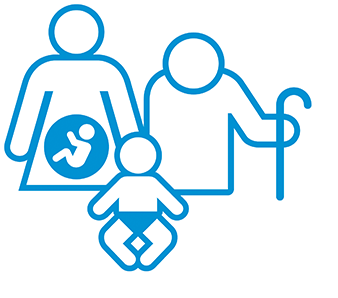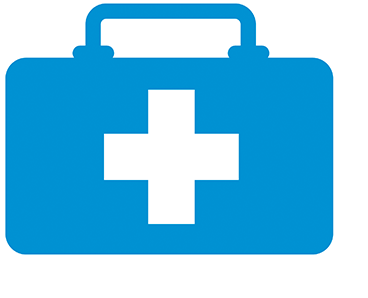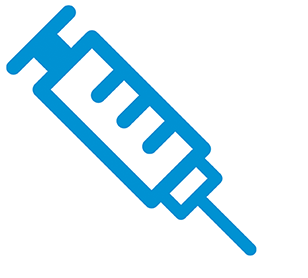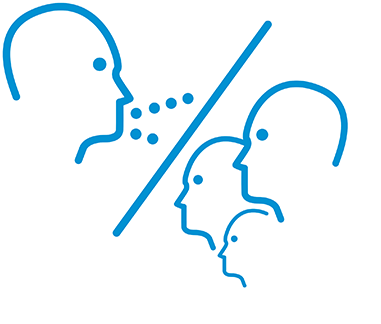The disease onset is typically very sudden and progresses rapidly. With babies and infants, the symptoms of meningococcal disease may be less clear-cut.
Meningococcal disease can progress in one of two ways, or both may occur simultaneously:
- In about two thirds of all cases, the disease expresses itself as meningitis.
Fever, headache, sensitivity to light and a state of “foggy-headedness” – such as feeling very sleepy or woozy – are the usual symptoms for meningococcal inflammation of the membranes of the brain (i.e. meningitis). One typical symptom is painful stiffness in the nape of the neck, often combined with morning sickness or symptoms of cardiovascular failure and occasional seizures. Patients usually feel very ill. In severe cases, blood clotting disorders produce spots or areas of haemorrhaging over the skin and mucous membranes.
Around 10–20% of all patients will ultimately suffer complications such as seizures or deafness, while children may also suffer developmental disorders. The illness is fatal in about 1% of cases.
- In about a third of all cases, the disease expresses itself as sepsis.
With meningococcal sepsis, the bacteria enter the bloodstream and flood the patient’s entire body. Blood coagulation is also disrupted. This will lead to large-scale bleeding in the skin. For 10–15% of patients, this life-threatening haemorrhaging may also occur in the cortex of the adrenal glands, which can result in circulatory shock. In some cases, complications may include gangrene in individual limbs, which in the worst case may then require amputation. Almost 1 in 10 patients will die from this sepsis; in serious cases, the figure is more like 1 in 3.
For babies and infants, symptoms such as fever, vomiting, cramps, irritability or sleepiness may also be accompanied by a protruding or hard fontanelle – the gap between the skull plates in infants. The stiff neck, in contrast, may be missing.







